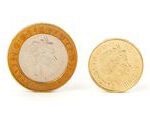How to Buy Gold with IRA Money: A Step-by-Step Guide for Researchers
Investing in gold is a time-tested strategy for diversifying your investment portfolio and hedging against economic uncertainties. When it comes to retirement planning, using Individual Retirement Account (IRA) funds to invest in gold can be an attractive option. In this comprehensive guide, we’ll walk you through the process of purchasing gold with your IRA money, providing you with the knowledge and tools to make informed decisions about your retirement investments.
I. Introduction
A. The Significance of Gold in Investment Portfolios
Gold has historically served as a store of value and a hedge against inflation, making it a valuable asset for long-term investors. Including gold in your portfolio can help reduce risk and enhance diversification.
B. The Tax-Advantaged Nature of IRAs
IRAs offer tax benefits that can amplify the growth of your retirement savings. By utilizing your IRA funds to invest in gold, you can potentially benefit from tax advantages while building a diversified retirement portfolio.
C. Purpose of the Guide
This guide aims to demystify the process of investing in gold with your IRA money, providing a step-by-step roadmap for researchers looking to secure their financial future through gold investments.
II. Understanding the Basics
A. What is an Individual Retirement Account (IRA)?
IRAs are tax-advantaged savings accounts designed to help individuals save for retirement. There are two primary types: Traditional IRAs, where contributions may be tax-deductible, and Roth IRAs, where qualified withdrawals are tax-free. Self-directed IRAs offer more flexibility in investment choices.
1. Traditional IRA vs. Roth IRA
Traditional IRAs are funded with pre-tax dollars, while Roth IRAs are funded with after-tax dollars. Each has unique tax advantages and considerations.
2. Self-Directed IRAs
Self-directed IRAs allow you to choose a wide range of investments, including gold, giving you more control over your retirement assets.
B. Types of Gold Investments Eligible for IRAs
1. Physical Gold (Coins and Bars)
Investors can purchase physical gold, such as gold coins and bars, and store them securely within an IRA. These must meet specific purity standards.
2. Gold Exchange-Traded Funds (ETFs)
Gold ETFs offer a convenient way to invest in gold without physically owning it. These funds are traded on stock exchanges and track the price of gold.
3. Gold Mining Stocks and Mutual Funds
Investors can also consider gold mining stocks or mutual funds that specialize in gold-related assets as part of their self-directed IRA.
III. Eligibility and Compliance
A. IRS Rules on Gold Investments in IRAs
Understanding IRS regulations is crucial when investing in gold within an IRA. Certain types of gold investments are prohibited, and you must choose an eligible custodian to hold your IRA assets.
1. Prohibited Investments
The IRS prohibits certain investments within IRAs, such as collectibles and life insurance. Gold investments must meet specific criteria.
2. Eligible Custodians
Select a reputable IRA custodian that allows alternative investments like gold. These custodians specialize in managing self-directed IRAs.
B. Determining Your Eligibility
Before proceeding, assess your eligibility for IRA contributions based on factors like income and age. Contribution limits may apply.
1. Contribution Limits
The IRS sets annual contribution limits for IRAs. As of 2021, the limit is $6,000 for individuals under 50 and $7,000 for those 50 and older.
2. Income Requirements
Income limits can affect your ability to contribute to a Roth IRA. Evaluate your income to determine eligibility.
C. Establishing a Self-Directed IRA
To invest in gold with your IRA money, establish a self-directed IRA. Select a custodian and complete the account setup process.
1. Selecting a Custodian
Choose a custodian experienced in handling self-directed IRAs. Research fees, reputation, and available services.
2. Opening the Account
Follow the custodian’s procedures to open your self-directed IRA account. Provide necessary documentation and personal information.
IV. Funding Your Gold Investment
A. Rollover vs. Contributions
Decide whether to fund your self-directed IRA through rollovers from existing retirement accounts or annual contributions.
1. Rollover from Existing Retirement Accounts
You can transfer funds from existing retirement accounts, such as 401(k)s or other IRAs, into your self-directed IRA to finance your gold investment.
2. Annual Contributions
Contribute annually to your self-directed IRA within IRS limits. Understand the tax implications of your contributions.
B. Contribution Limits and Deadlines
Stay informed about annual contribution limits and deadlines set by the IRS to maximize your retirement savings.
C. Tax Implications of Funding
Understand the tax consequences of your funding method, whether it’s a rollover or annual contributions. Consult a tax professional if needed.
V. Selecting Your Gold Investment
A. Researching Gold Options
Thoroughly research the different gold investment options available to you, including physical gold dealers, gold ETFs, and gold mining stocks.
B. Evaluating Gold Investments
Consider essential factors when evaluating gold investments, such as the purity and authenticity of physical gold, expense ratios and fees for ETFs, and risk factors for gold mining stocks.
VI. Making the Purchase
A. Buying Physical Gold
If you choose to invest in physical gold, select reputable dealers, and understand the storage and insurance considerations.
B. Investing in Gold ETFs
For Gold ETFs, place buy orders through your IRA custodian’s platform. Develop a strategy for monitoring and managing your ETF investments.
C. Acquiring Gold Mining Stocks
Invest in gold mining stocks using your self-directed IRA. Explore diversification opportunities within the gold sector.
VII. Managing Your Gold Investment
A. Regularly Reviewing Your Portfolio
Periodically review your gold investments and consider rebalancing strategies to maintain your target asset allocation.
B. Tax Considerations
Stay compliant with IRS reporting requirements and understand the tax implications of withdrawals from your self-directed IRA.
C. Beneficiary Designations and Estate Planning
Plan for the future by designating beneficiaries for your IRA assets. Regularly update beneficiary information to reflect your current wishes.
VIII. Risks and Considerations
A. Market Volatility and Gold Price Fluctuations
Be prepared for market volatility and fluctuations in gold prices. Maintain a long-term perspective to weather short-term market fluctuations.
B. Regulatory Changes and IRS Rules
Stay informed about changes in IRS regulations and tax laws that could impact your self-directed IRA investments.
C. Investment Scams and Fraud
Exercise caution to avoid falling victim to investment scams or fraudulent schemes, especially in the precious metals market. Do thorough due diligence before making investment decisions.
IX. Real-Life Examples
A. Case Studies
Explore case studies of individuals who successfully invested in gold with their IRAs. Learn from their experiences and outcomes.
B. Lessons Learned and Outcomes
Gain valuable insights into the real-world application of gold investments in self-directed IRAs and understand the lessons learned by fellow
















